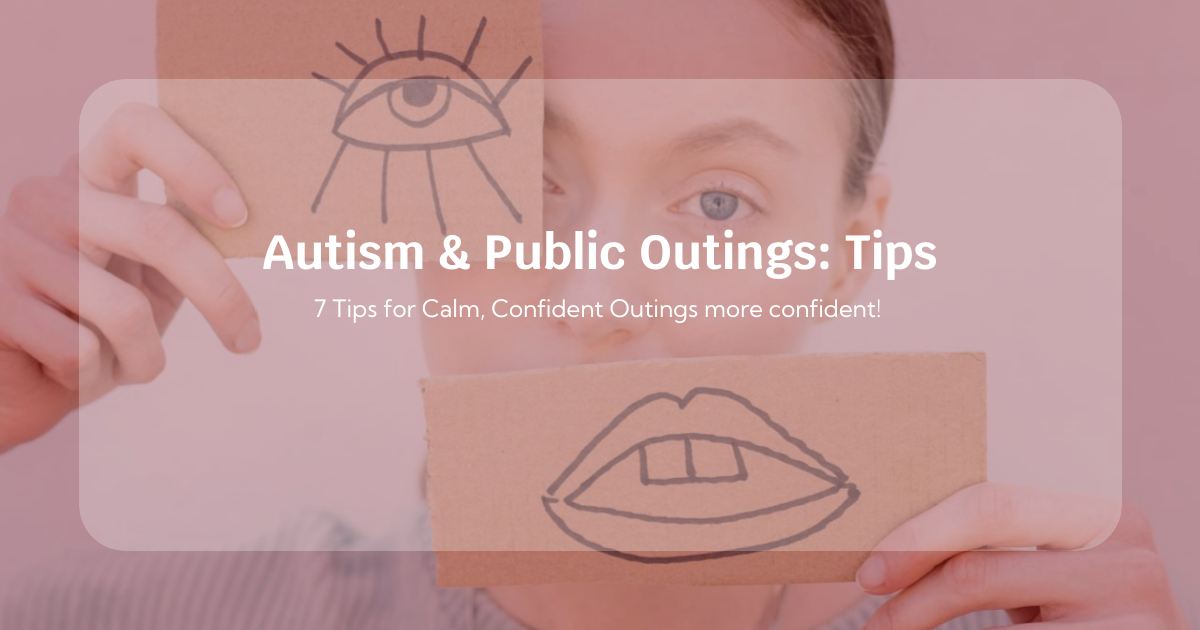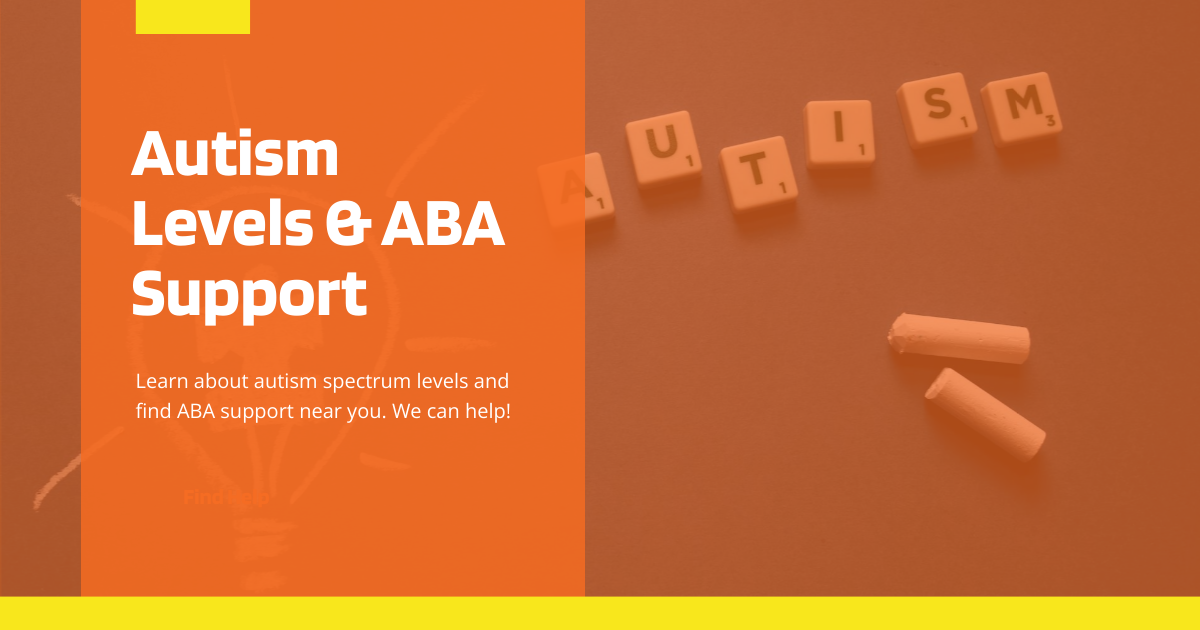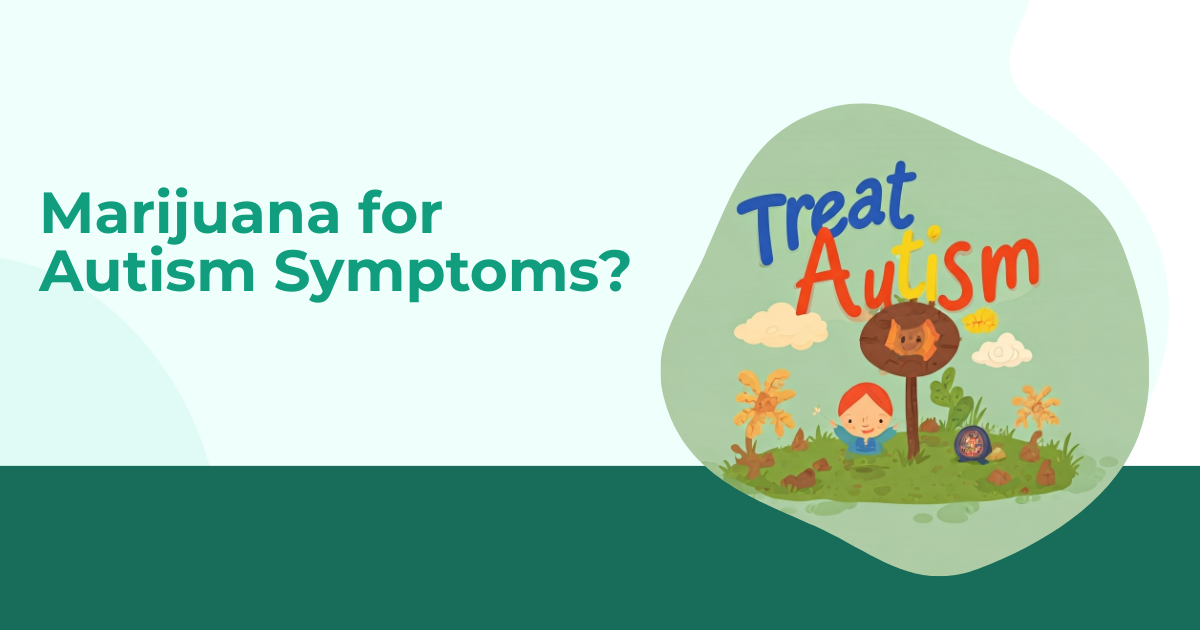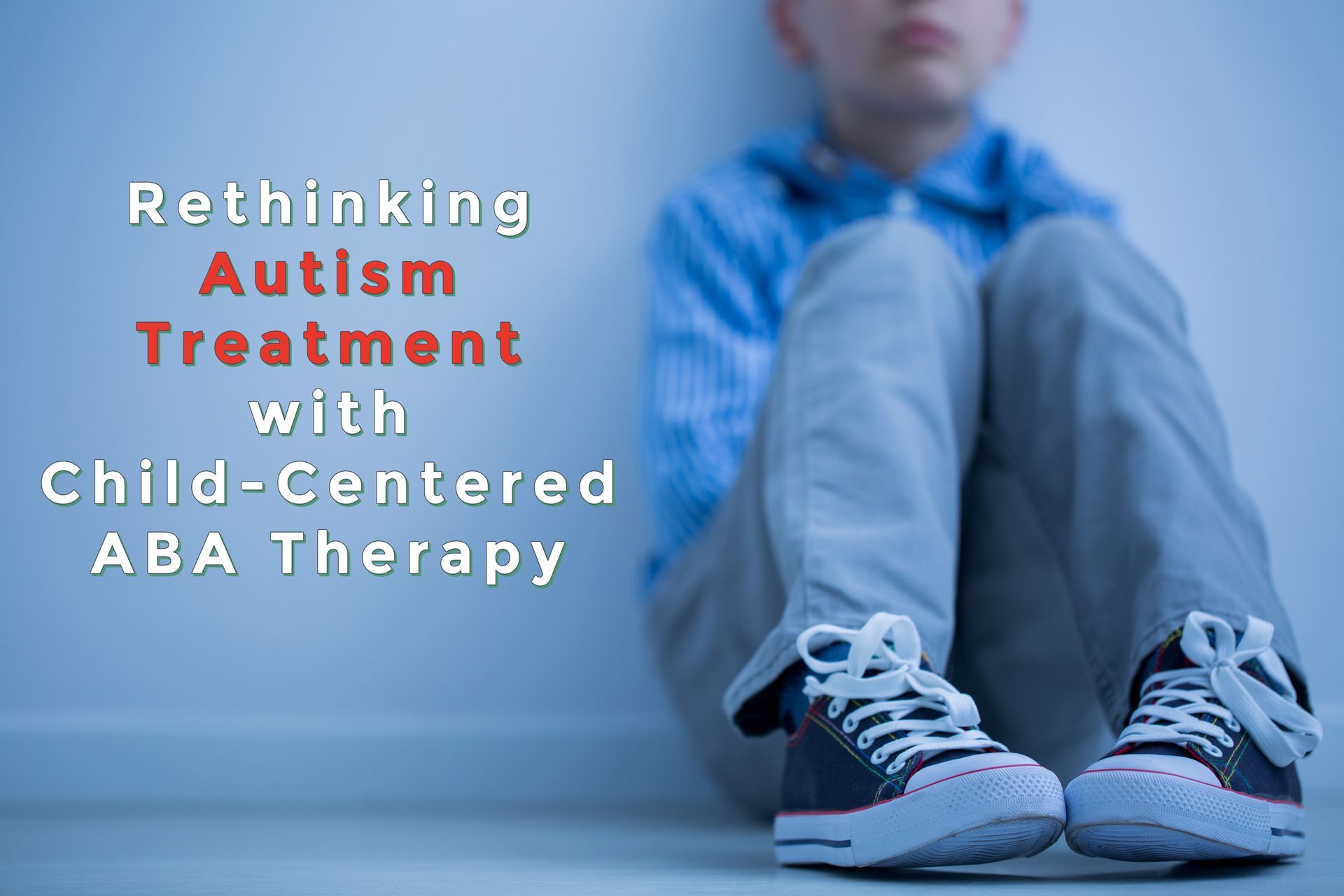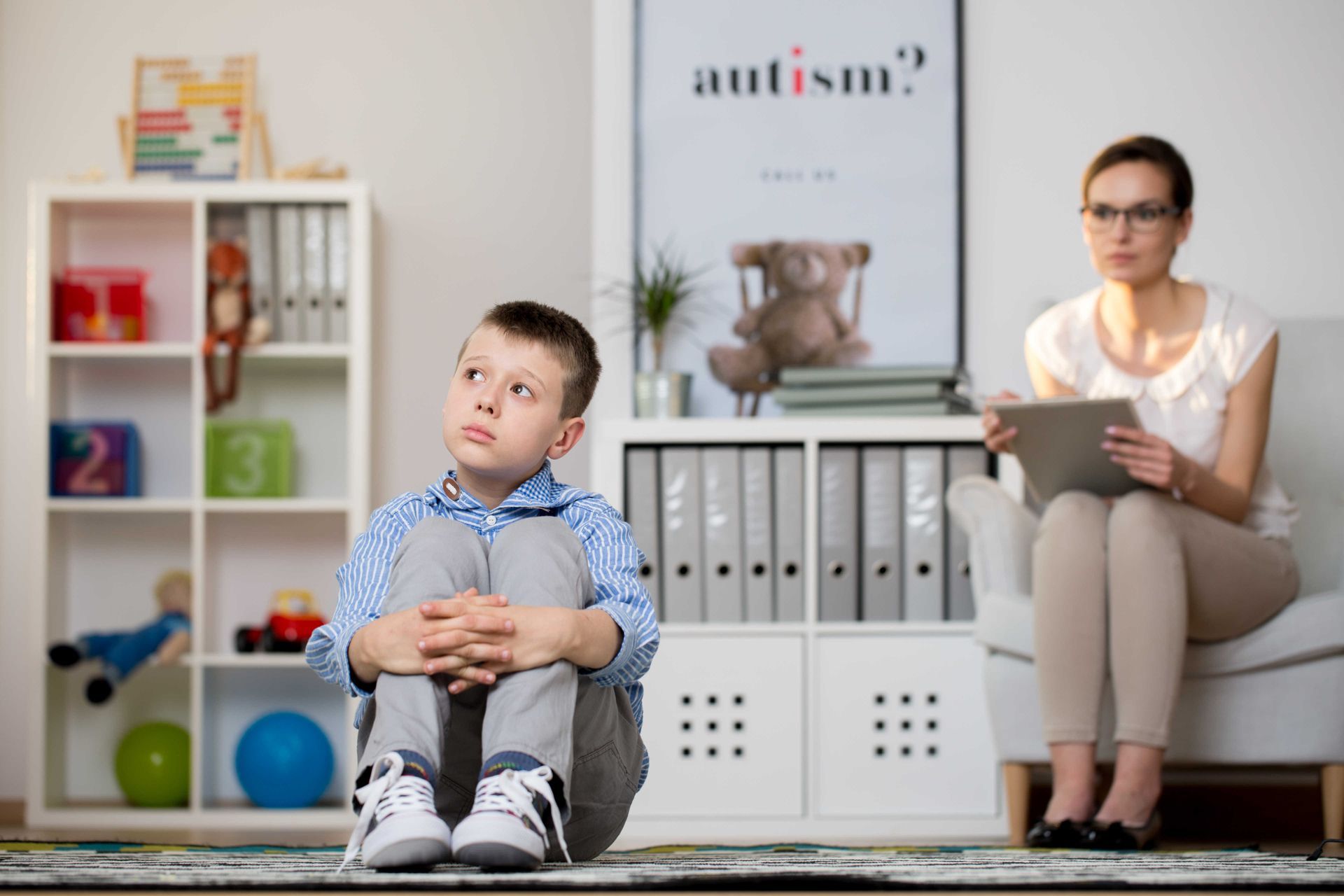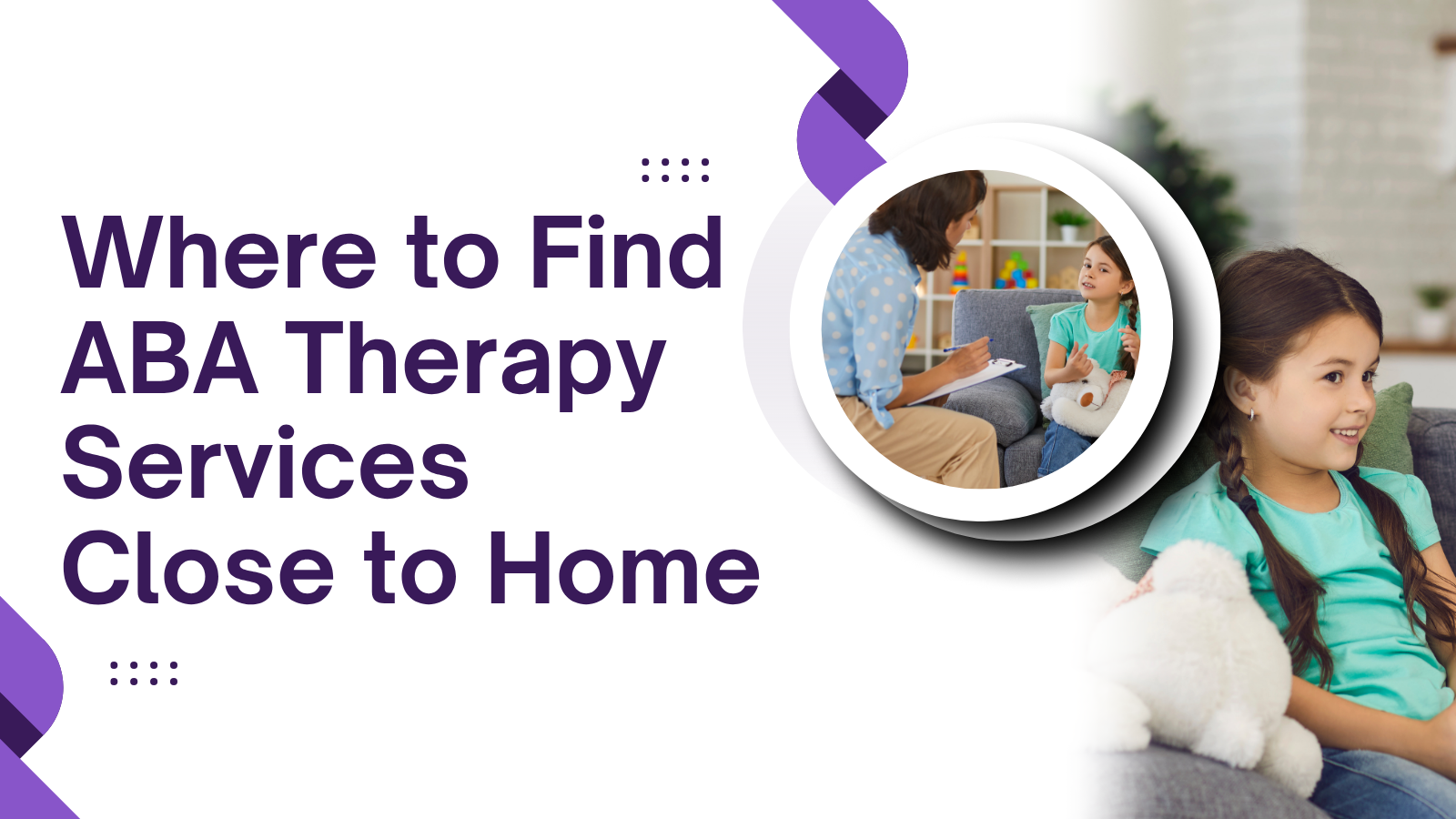Make the most of the season by following these simple guidelines
Martin Klein • June 25, 2025
The new season is a great reason to make and keep resolutions. Whether it’s eating right or cleaning out the garage, here are some tips for making and keeping resolutions.
Make a list
Check the list regularly
Reward yourself
Think positively
Lists are great ways to stay on track. Write down some big things you want to accomplish and some smaller things, too.
Check the list regularly
Don’t forget to check in and see how you’re doing. Just because you don’t achieve the big goals right away doesn’t mean you’re not making progress.
Reward yourself
When you succeed in achieving a goal, be it a big one or a small one, make sure to pat yourself on the back.
Think positively
Positive thinking is a major factor in success. So instead of mulling over things that didn’t go quite right, remind yourself of things that did.

For years, professionals and families alike have recognized a critical gap in how developmental conditions are identified—particularly when it comes to autism in young girls. Despite increasing awareness, many girls are either misdiagnosed or go undiagnosed for years. According to leading experts in developmental psychology and behavioral science, this is not due to a lack of symptoms but rather because those symptoms often manifest differently in girls than in boys. In this article, a developmental pediatrician unpacks the reasons behind the misdiagnosis of autism in young girls, what signs are frequently overlooked, and how tools like aba applied behavior analysis can play a transformative role in providing the right support. Why the Diagnostic Criteria Fall Short Most diagnostic tools and clinical descriptions of autism were developed based on studies predominantly involving boys. As a result, the current diagnostic criteria tend to reflect male presentations of behavioral traits. This gender-skewed framework contributes to a major diagnostic blind spot for girls. Girls are more likely to display internalized behaviors such as anxiety, extreme shyness, or obsessive interests in socially acceptable topics (e.g., animals, celebrities, or books). These behaviors may not immediately raise concern among caregivers or educators, especially when the child is performing well academically or appearing socially engaged on the surface. In contrast, boys more often display outward behaviors that trigger evaluation sooner—such as repetitive movements or overt communication challenges. Therefore, autism in young girls often remains hidden behind a mask of social conformity and verbal ability. The Masking Phenomenon One of the primary reasons why many girls are misdiagnosed is the phenomenon of "masking." Girls tend to be more adept at mimicking social behaviors, even if they don’t fully understand them. They learn to copy peers, rehearse social scripts, and force themselves into social situations that feel uncomfortable—all to appear "normal." This ability to camouflage symptoms can come at a great cost. While the outside world may see a high-functioning, quiet, and polite child, internally, the girl may struggle with intense anxiety, confusion, and emotional exhaustion. Over time, this leads to secondary conditions such as depression, eating disorders, and even self-harm. A misdiagnosis or late diagnosis of autism in young girls means these issues may be treated as isolated mental health disorders, missing the underlying cause. Common Misdiagnoses for Girls on the Spectrum Girls with undiagnosed autism often receive alternative diagnoses first. These can include: Generalized Anxiety Disorder Obsessive Compulsive Disorder (OCD) Attention Deficit Hyperactivity Disorder (ADHD) Social Anxiety Selective Mutism While these conditions may coexist, the root cause—autism in young girls—remains unaddressed without a comprehensive behavioral evaluation. Behavioral Signs That May Go Unnoticed Here are some subtle yet critical signs that doctors and educators may miss: Intense interest in socially acceptable subjects (e.g., animals or books) but with an obsessive level of detail. Hyper-awareness of social norms but difficulty applying them appropriately. Imitating others to fit in, often without genuine understanding. Strong resistance to change, which may be seen as stubbornness or anxiety. Preference for routines, including inflexible habits around food, clothing, or daily tasks. Excessive rule-following, beyond what’s expected for their age. These characteristics often do not align with the more visible traits typically associated with developmental challenges in boys. The Role of Early Screening and Education Early screening is vital to identifying and treating autism in young girls. Pediatricians recommend starting assessments as early as 18 months, especially if a child displays delayed social communication or behavioral rigidity. However, because many girls meet basic developmental milestones—like language and eye contact—they may not trigger concern during routine check-ups. Educators and school counselors also play a crucial role. Training school staff to recognize non-obvious signs and refer for assessments is essential. In states like Maryland, increasing awareness among school systems is slowly improving identification rates, with help from local resources and specialized centers. How ABA Therapy Helps Girls Thrive Once a diagnosis is made, timely intervention is key. ABA applied behavior analysis is one of the most effective, research-backed strategies used to support individuals with developmental conditions. This therapeutic approach breaks down behaviors into measurable components and teaches skills through repetition and reinforcement. Girls benefit greatly from aba behavior analysis when the program is tailored to address their unique challenges—such as social communication, emotional regulation, and managing anxiety in peer relationships. The ability to apply structured behavioral interventions in home and school environments makes ABA both flexible and effective. Several aba companies Maryland now offer personalized therapy options for girls, including female therapists and peer group training sessions, ensuring a safe and relatable space for learning. Why a Gender-Informed Approach Matters When professionals understand the gender-specific manifestations of developmental challenges, the quality of care dramatically improves. A gender-informed diagnostic and treatment plan allows girls to receive accurate evaluations and meaningful support. For instance: Speech and language assessments may focus more on pragmatic language (social use of language) than vocabulary. Behavioral evaluations may emphasize social-emotional masking strategies and internal coping mechanisms. Customized ABA therapy plans can incorporate interests and learning styles that resonate more with girls. By understanding that autism in young girls often looks different than in boys, clinicians and therapists can avoid the trap of underdiagnosis and missed intervention opportunities. Supporting Parents Through the Journey Parents are often the first to notice that something feels "different," even if it’s not clearly identifiable. If your child shows signs like persistent anxiety, social withdrawal, or emotional rigidity—especially in comparison to same-aged peers—it’s important to consult a specialist. Parents in Maryland can benefit from a growing network of aba companies Maryland that offer diagnostic support, individualized education plans (IEPs), and home-based interventions. Connecting with other parents facing similar experiences can also provide validation and community. Parent coaching, support groups, and educational resources can ease the emotional burden and help families advocate more effectively for their daughters. The Path Forward As awareness grows, more professionals are taking a closer look at how developmental conditions present in girls. With proper training, early assessments, and the right interventions like aba autism therapy Maryland, the landscape is gradually changing. Misdiagnosis delays the support that many girls desperately need—but it’s never too late to start. Recognizing the signs, asking the right questions, and engaging qualified professionals are the first steps toward giving every child the opportunity to reach their full potential. Final Thoughts from the Doctor “I’ve seen too many girls come into my clinic with years of misdiagnoses,” says Dr. Elise Morgan, a developmental pediatrician specializing in early childhood evaluations. “Once we peel back the layers—often with help from aba applied behavior analysis assessments—we uncover the real story. These girls aren’t just shy or anxious. They’re bright minds navigating a world that doesn’t fully understand them. But when we understand them, we can help them thrive.” It’s time we shift our lens and recognize that autism in young girls is real, nuanced, and deserving of our full attention. Ready for the next step? Able Minds ABA is just a message away. FAQs Why is autism in young girls frequently misdiagnosed? Autism in young girls is often misdiagnosed because the current diagnostic criteria are largely based on how symptoms present in boys. Girls tend to mask their challenges by imitating social behaviors, which can make their differences less noticeable. Their symptoms often manifest as anxiety, perfectionism, or obsessive interests in socially acceptable topics, which can be mistaken for other conditions like OCD or social anxiety. What are some early signs of autism in young girls that parents and doctors might overlook? Some commonly overlooked signs include a strong desire for routine, intense but socially accepted interests, challenges with unstructured social situations, and copying others to fit in. These traits may not raise red flags unless observed through a gender-informed lens. Early intervention based on these subtle signs can be crucial for long-term support. How does ABA applied behavior analysis help girls after a diagnosis? ABA applied behavior analysis focuses on breaking complex skills into manageable steps and reinforcing positive behaviors. For girls, ABA therapy can help with emotional regulation, social interaction, and reducing anxiety related to peer dynamics. When tailored appropriately, ABA strategies address specific behavioral patterns and help build confidence and independence. Can girls benefit from the same ABA therapy techniques used for boys? While the core principles of ABA behavior analysis are consistent for all children, the approach must be customized. Girls often need support in areas like social reciprocity, interpreting subtle social cues, and managing internalized stress. Many ABA companies in Maryland provide personalized programs that account for these differences, ensuring that girls receive effective and compassionate care. What are some of the common misdiagnoses girls with autism receive? Girls with undiagnosed autism are frequently misdiagnosed with anxiety disorders, OCD, ADHD, or selective mutism. These labels often overlook the underlying developmental condition, delaying access to appropriate interventions like ABA autism therapy in Maryland, which could make a significant difference in the child’s daily functioning. What should I do if I suspect autism in my young daughter, but she seems socially aware? If you notice signs like emotional exhaustion after social interactions, rigid thinking, or extreme adherence to routines, it’s important to consult a specialist in developmental evaluations. Girls often appear socially competent but may be using coping mechanisms that mask deeper struggles. A comprehensive behavioral assessment, including tools used in ABA applied behavior analysis, can provide clearer insights.

For years, professionals and families alike have recognized a critical gap in how developmental conditions are identified—particularly when it comes to autism in young girls . Despite increasing awareness, many girls are either misdiagnosed or go undiagnosed for years. According to leading experts in developmental psychology and behavioral science, this is not due to a lack of symptoms but rather because those symptoms often manifest differently in girls than in boys. In this article, a developmental pediatrician unpacks the reasons behind the misdiagnosis of autism in young girls , what signs are frequently overlooked, and how tools like aba applied behavior analysis can play a transformative role in providing the right support. Why the Diagnostic Criteria Fall Short Most diagnostic tools and clinical descriptions of autism were developed based on studies predominantly involving boys. As a result, the current diagnostic criteria tend to reflect male presentations of behavioral traits. This gender-skewed framework contributes to a major diagnostic blind spot for girls. Girls are more likely to display internalized behaviors such as anxiety, extreme shyness, or obsessive interests in socially acceptable topics (e.g., animals, celebrities, or books). These behaviors may not immediately raise concern among caregivers or educators, especially when the child is performing well academically or appearing socially engaged on the surface. In contrast, boys more often display outward behaviors that trigger evaluation sooner—such as repetitive movements or overt communication challenges. Therefore, autism in young girls often remains hidden behind a mask of social conformity and verbal ability. The Masking Phenomenon One of the primary reasons why many girls are misdiagnosed is the phenomenon of "masking." Girls tend to be more adept at mimicking social behaviors, even if they don’t fully understand them. They learn to copy peers, rehearse social scripts, and force themselves into social situations that feel uncomfortable—all to appear "normal." This ability to camouflage symptoms can come at a great cost. While the outside world may see a high-functioning, quiet, and polite child, internally, the girl may struggle with intense anxiety, confusion, and emotional exhaustion. Over time, this leads to secondary conditions such as depression, eating disorders, and even self-harm. A misdiagnosis or late diagnosis of autism in young girls means these issues may be treated as isolated mental health disorders, missing the underlying cause. Common Misdiagnoses for Girls on the Spectrum Girls with undiagnosed autism often receive alternative diagnoses first. These can include: Generalized Anxiety Disorder Obsessive Compulsive Disorder (OCD) Attention Deficit Hyperactivity Disorder (ADHD) Social Anxiety Selective Mutism While these conditions may coexist, the root cause— autism in young girls —remains unaddressed without a comprehensive behavioral evaluation. Behavioral Signs That May Go Unnoticed Here are some subtle yet critical signs that doctors and educators may miss: Intense interest in socially acceptable subjects (e.g., animals or books) but with an obsessive level of detail. Hyper-awareness of social norms but difficulty applying them appropriately. Imitating others to fit in , often without genuine understanding. Strong resistance to change , which may be seen as stubbornness or anxiety. Preference for routines , including inflexible habits around food, clothing, or daily tasks. Excessive rule-following , beyond what’s expected for their age. These characteristics often do not align with the more visible traits typically associated with developmental challenges in boys. The Role of Early Screening and Education Early screening is vital to identifying and treating autism in young girls . Pediatricians recommend starting assessments as early as 18 months, especially if a child displays delayed social communication or behavioral rigidity. However, because many girls meet basic developmental milestones—like language and eye contact—they may not trigger concern during routine check-ups. Educators and school counselors also play a crucial role. Training school staff to recognize non-obvious signs and refer for assessments is essential. In states like Maryland, increasing awareness among school systems is slowly improving identification rates, with help from local resources and specialized centers. How ABA Therapy Helps Girls Thrive Once a diagnosis is made, timely intervention is key. ABA applied behavior analysis is one of the most effective, research-backed strategies used to support individuals with developmental conditions. This therapeutic approach breaks down behaviors into measurable components and teaches skills through repetition and reinforcement. Girls benefit greatly from aba behavior analysis when the program is tailored to address their unique challenges—such as social communication, emotional regulation, and managing anxiety in peer relationships. The ability to apply structured behavioral interventions in home and school environments makes ABA both flexible and effective. Several aba companies Maryland now offer personalized therapy options for girls, including female therapists and peer group training sessions, ensuring a safe and relatable space for learning. Why a Gender-Informed Approach Matters When professionals understand the gender-specific manifestations of developmental challenges, the quality of care dramatically improves. A gender-informed diagnostic and treatment plan allows girls to receive accurate evaluations and meaningful support. For instance: Speech and language assessments may focus more on pragmatic language (social use of language) than vocabulary. Behavioral evaluations may emphasize social-emotional masking strategies and internal coping mechanisms. Customized ABA therapy plans can incorporate interests and learning styles that resonate more with girls. By understanding that autism in young girls often looks different than in boys, clinicians and therapists can avoid the trap of underdiagnosis and missed intervention opportunities. Supporting Parents Through the Journey Parents are often the first to notice that something feels "different," even if it’s not clearly identifiable. If your child shows signs like persistent anxiety, social withdrawal, or emotional rigidity—especially in comparison to same-aged peers—it’s important to consult a specialist. Parents in Maryland can benefit from a growing network of aba companies Maryland that offer diagnostic support, individualized education plans (IEPs), and home-based interventions. Connecting with other parents facing similar experiences can also provide validation and community. Parent coaching, support groups, and educational resources can ease the emotional burden and help families advocate more effectively for their daughters. The Path Forward As awareness grows, more professionals are taking a closer look at how developmental conditions present in girls. With proper training, early assessments, and the right interventions like aba autism therapy Maryland , the landscape is gradually changing. Misdiagnosis delays the support that many girls desperately need—but it’s never too late to start. Recognizing the signs, asking the right questions, and engaging qualified professionals are the first steps toward giving every child the opportunity to reach their full potential. Final Thoughts from the Doctor “I’ve seen too many girls come into my clinic with years of misdiagnoses,” says Dr. Elise Morgan, a developmental pediatrician specializing in early childhood evaluations. “Once we peel back the layers—often with help from aba applied behavior analysis assessments—we uncover the real story. These girls aren’t just shy or anxious. They’re bright minds navigating a world that doesn’t fully understand them. But when we understand them, we can help them thrive.” It’s time we shift our lens and recognize that autism in young girls is real, nuanced, and deserving of our full attention. Ready for the next step? Able Minds ABA is just a message away. FAQs Why is autism in young girls frequently misdiagnosed? Autism in young girls is often misdiagnosed because the current diagnostic criteria are largely based on how symptoms present in boys. Girls tend to mask their challenges by imitating social behaviors, which can make their differences less noticeable. Their symptoms often manifest as anxiety, perfectionism, or obsessive interests in socially acceptable topics, which can be mistaken for other conditions like OCD or social anxiety. What are some early signs of autism in young girls that parents and doctors might overlook? Some commonly overlooked signs include a strong desire for routine, intense but socially accepted interests, challenges with unstructured social situations, and copying others to fit in. These traits may not raise red flags unless observed through a gender-informed lens. Early intervention based on these subtle signs can be crucial for long-term support. How does ABA applied behavior analysis help girls after a diagnosis? ABA applied behavior analysis focuses on breaking complex skills into manageable steps and reinforcing positive behaviors. For girls, ABA therapy can help with emotional regulation, social interaction, and reducing anxiety related to peer dynamics. When tailored appropriately, ABA strategies address specific behavioral patterns and help build confidence and independence. Can girls benefit from the same ABA therapy techniques used for boys? While the core principles of ABA behavior analysis are consistent for all children, the approach must be customized. Girls often need support in areas like social reciprocity, interpreting subtle social cues, and managing internalized stress. Many ABA companies in Maryland provide personalized programs that account for these differences, ensuring that girls receive effective and compassionate care. What are some of the common misdiagnoses girls with autism receive? Girls with undiagnosed autism are frequently misdiagnosed with anxiety disorders, OCD, ADHD, or selective mutism. These labels often overlook the underlying developmental condition, delaying access to appropriate interventions like ABA autism therapy in Maryland , which could make a significant difference in the child’s daily functioning. What should I do if I suspect autism in my young daughter, but she seems socially aware? If you notice signs like emotional exhaustion after social interactions, rigid thinking, or extreme adherence to routines, it’s important to consult a specialist in developmental evaluations. Girls often appear socially competent but may be using coping mechanisms that mask deeper struggles. A comprehensive behavioral assessment, including tools used in ABA applied behavior analysis , can provide clearer insights.

Starting a new school year can be both exciting and challenging for any child, but for a child with autism, the transition often requires extra preparation and support. Ensuring that your child enters the school year with the tools they need for success involves a combination of planning, communication, and evidence-based interventions. Among the most effective approaches is ABA (Applied Behavior Analysis), a proven method to help children develop essential academic, social, and behavioral skills. This article explores how you can utilize ABA strategies to prepare your child with autism for a smooth and productive school experience, especially in regions where access to expert services like ABA autism therapy in Maryland is readily available. Understanding ABA and Its Role in School Preparation ABA behavior analysis is a structured approach that applies principles of learning theory to bring about meaningful changes in behavior. It focuses on teaching skills in small, measurable steps and reinforcing positive behaviors. ABA can be applied in various settings, including homes, clinics, and schools, making it especially effective for school readiness. The strategies used in ABA therapy are not one-size-fits-all. They are tailored to each child’s unique needs and strengths, which is crucial when planning for academic environments. By working with ABA companies in Maryland, families can access personalized programs to ensure their child’s transition to school is smooth and positive. Step-by-Step ABA Strategies to Prepare for the School Year Start Early with a School Routine Practice One of the best ways to support a child with autism is to help them anticipate and adapt to upcoming changes. Start by creating a school routine at home several weeks before the academic year begins. This routine should mirror the school day, including wake-up time, mealtimes, study sessions, and bedtime. ABA applied behavior analysis uses structured schedules and visual supports (like charts or pictures) to help children grasp and follow daily routines. Reinforcing each step with positive reinforcement—such as praise or a preferred activity—helps children learn and retain the schedule more effectively. Use Social Stories and Role-Playing Children benefit greatly from clear expectations. Social stories are short, descriptive narratives designed to teach social cues, classroom behavior, or transitions. These can be developed with the help of an ABA therapist or behavior technician. Role-playing school-related scenarios like raising a hand, asking for help, or participating in group activities can further reinforce these stories. Through ABA behavior analysis, therapists may break down complex behaviors into smaller tasks to teach them one step at a time, helping your child learn new skills in a structured and supportive way. Develop Functional Communication Skills Effective communication is essential for classroom success. Whether your child with autism is verbal or non-verbal, they must be able to express their needs, ask questions, and engage in peer interactions. ABA strategies like mand training (requesting items or actions) and tact training (labeling objects or actions) can enhance communication abilities. With consistent practice, children learn to express themselves appropriately, which reduces frustration and supports better social interaction. In states like Maryland, families can access specialized ABA autism therapy Maryland services that emphasize functional communication through both verbal language and alternative communication systems such as Picture Exchange Communication System (PECS) or speech-generating devices. Target School-Specific Skills Preparing for school isn’t just about behavior and communication—it also includes academic and practical life skills. ABA therapy can help your child learn: Sitting quietly during lessons Following teacher directions Transitioning between activities Completing worksheets Working independently or in a group Each skill is broken down into achievable steps using discrete trial training (DTT) or natural environment teaching (NET) techniques. Therapists reinforce each correct behavior, helping your child master tasks one at a time. Enrolling with experienced ABA companies in Maryland can give your child access to professionals who understand how to align therapy goals with academic benchmarks. Collaborate with School Staff and Teachers Strong collaboration between families, therapists, and educators is crucial for a child’s school success. Your child’s ABA provider can work directly with teachers to develop and implement strategies that support your child in the classroom. For instance, ABA applied behavior analysis professionals may help design behavior intervention plans (BIPs), individualized education programs (IEPs), or classroom accommodations. These plans outline clear expectations and provide consistent approaches to address any challenges. Many ABA companies in Maryland have established partnerships with school districts and educators, making coordination smoother and more effective. Prepare for Transitions and Changes Changes in classroom settings, teachers, or routines can cause anxiety. ABA strategies like transition cues, visual schedules, and first-then boards help ease transitions and improve predictability. For example, using a visual timer before a change in activity can signal the upcoming transition, allowing your child with autism to adjust gradually. When taught consistently, these tools reduce behavioral disruptions and increase emotional regulation. Encourage Peer Interaction and Social Skills Peer interaction is often challenging but vital for emotional and social development. ABA therapists use group sessions or structured playdates to teach sharing, turn-taking, and conversation skills. Social skills training might include: Greeting peers appropriately Initiating play Responding to questions Understanding nonverbal cues With practice and reinforcement, your child can build meaningful connections and develop confidence in social situations. This foundation is critical for long-term success in a classroom environment. Monitor Progress and Make Adjustments One of the strengths of ABA behavior analysis is its reliance on data. Therapists continually assess your child’s progress and make data-driven decisions to adjust goals or teaching methods. This flexible approach ensures that strategies remain effective and aligned with the child’s evolving needs. Parents should request regular updates from their therapy team, especially during the back-to-school transition. These reports can also be shared with teachers to maintain consistency across environments. Reinforce Learning at Home Consistency across home and school settings boosts your child’s success. Parents can use the same reinforcement techniques used during ABA sessions to support skills at home. For example, if your child with autism is working on completing tasks independently at school, you can encourage the same behavior by offering positive feedback and small rewards for similar efforts at home. This unified approach strengthens skill retention and generalization. Final Thoughts Preparing your child with autism for a successful school year is a journey that benefits immensely from structured, individualized strategies like those offered through ABA applied behavior analysis. Whether your child is just starting school or transitioning to a new grade, the right support can make a significant difference in their ability to thrive. In areas such as Maryland, access to reputable providers of ABA autism therapy ensures that families have the tools they need to build foundational skills, foster independence, and promote positive behavior. By leveraging the power of ABA behavior analysis, engaging with experienced ABA companies in Maryland, and creating a consistent, nurturing environment at home and school, you are paving the way for a more confident and capable learner. Partner with Able Minds ABA and move forward with purpose—reach out today. FAQs How can ABA help my child with autism get ready for school? ABA (Applied Behavior Analysis) helps by teaching school-related skills such as following instructions, staying on task, communicating needs, and transitioning between activities. These skills are broken down into small, manageable steps, reinforced with rewards, and taught in a consistent manner, making it easier for your child with autism to adapt to the classroom environment. What specific ABA strategies are used to support classroom readiness? Common strategies include visual schedules, social stories, role-playing, discrete trial training (DTT), natural environment teaching (NET), and reinforcement systems. These approaches help children learn routines, academic tasks, social interaction, and appropriate classroom behavior in a structured and predictable way. Can ABA help improve my child’s communication for school interactions? Yes. ABA focuses on developing functional communication, including verbal language, gestures, or picture-based systems like PECS. Through customized communication training, your child with autism can learn to express needs, ask for help, and interact with peers and teachers more effectively. What are the benefits of starting ABA therapy before the school year begins? Starting early gives your child a head start in learning routines, social expectations, and self-help skills needed in school. It also allows time to address any behavioral challenges in a safe, supportive environment before they affect school performance. How do ABA companies in Maryland assist with school transitions? Many ABA companies in Maryland offer transition-focused programs that include school-readiness training, collaboration with educators, and on-site classroom support. They also provide personalized behavior plans and communication strategies that align with academic goals. Can ABA strategies be practiced at home? Absolutely. Parents are encouraged to reinforce ABA techniques at home, such as using visual cues, consistent routines, and positive reinforcement. Working closely with your ABA therapy team ensures continuity between home and school settings, which helps your child with autism maintain and generalize learned skills. How can I ensure my child’s school and ABA therapist work together? Ask your ABA provider to coordinate directly with school staff. Many ABA therapists participate in IEP meetings, develop behavior intervention plans (BIPs), and consult with teachers to provide cohesive support. In Maryland, several ABA autism therapy providers actively collaborate with local schools for integrated care.


